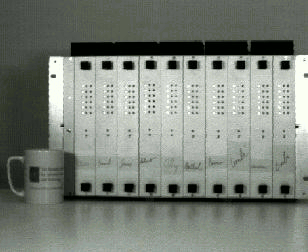

EGO is a program to perform molecular dynamics simulations on parallel as well as on sequential computers. Supported parallel machines include the Hitachi SR8000, CRAY-T3E, IBM-SP2, Fujitsu VPP700, Parsytec-CC under PARIX and inhomogeneous clusters of UNIX workstations under PVM or MPI. EGO also runs sequentially on any decent UNIX workstation; even Windows95/NT PC's (with a GNU-C compiler) can be used.
The energy function employed partially derives from the one used in the program X-PLOR of A. Brünger. EGO can read X-PLOR pdb, psf, and parameter files and EGO output files can be converted to X-PLOR DCD/crd files and read back into X-PLOR for further analysis of the resulting trajectories.
EGO was developed for the simulation of large molecular systems on parallel computers (under PVM, MPI or PARIX). EGO uses a multiple time step algorithm combined with a structure adapted fast multipole method for the description of long range electrostatics. The method has been demonstrated to scale linearly with the number of atoms in the range of about 40,000 atoms.
The most recent version of the EGO manual is available online or as a PostScript file. The source of the program EGO (for PVM, MPI, and PARIX) can be downloaded here. An example data set (BPTI) is also included. Please don't forget to read the README file!
BTW: the animated GIF EGO-logo, which you can see above, was produced with EGO (of course): it displays the trajectory of a short molecular dynamics simulation of charged carbon atoms, which are arranged to form the letters EGO, inside a box of water (of which the front half is removed so that we can see the EGO letters ;-).The animation was then done with RenderMan on a NeXT computer. The small program to produce the RenderMan input files (*.rib) is part of the EGO distribution.
 The first version of EGO has been developed 1988/89 by H. Grubmüller and H. Heller in the Theoretical Biophysics group of Klaus Schulten at the Technical University of Munich (TUM), Germany. It had been written in occam II and ran on a home built network of T800 transputers, called the AlterEgo computer (see picture to the right).
The first version of EGO has been developed 1988/89 by H. Grubmüller and H. Heller in the Theoretical Biophysics group of Klaus Schulten at the Technical University of Munich (TUM), Germany. It had been written in occam II and ran on a home built network of T800 transputers, called the AlterEgo computer (see picture to the right).
In the following four years H. Heller continued to work on the program (and also the AlterEgo computer hardware) in the group of Klaus Schulten at the University of Illinois at Urbana-Champaign (UIUC), Il, U.S.A. The program was translated from occam II to C and implemented on various platforms (e.g., a CM5 Connection Machine and networks of workstations). Many people helped, among them Michael Schaefer, Amitabh Sinha, Tom Bishop, Brad Banko, and Klaus Boehncke.
Beginning with 1993, EGO has been completely rewritten by Markus Eichinger supported by Helmut Grubmüller, Helmut Heller, Christoph Niedermeier, Chris Brandt, and Robert Kossman in the Theoretical Biophysics group of Paul Tavan at the Institute for Medical Optics at the Ludwig Maximilians University, Munich, Germany. The resulting program is called EGO_VIII and has been released into the public domain under the GNU general public license. Funding has been provided by the Deutsche Forschungsgemeinschaft (DFG), SFB-143 and SFB-533.